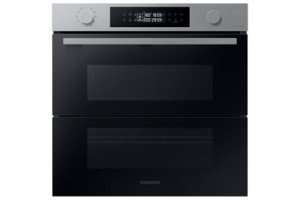The Rise of Integrated Electric Ovens: A Comprehensive Guide
Integrated electric ovens are becoming increasingly popular in modern-day kitchens due to their smooth design, energy efficiency, and advanced cooking functions. Developed to blend effortlessly with integrated oven sale , these appliances not only boost aesthetics however likewise provide a series of functionalities that deal with the cooking needs of modern families. This short article will explore the benefits of integrated electric ovens, how they compare to traditional ovens, and essential elements to consider when buying one.
What is an Integrated Electric Oven?
An integrated electric oven is developed to be built into kitchen cabinetry, supplying a structured look that maximizes space performance. Unlike freestanding ovens, integrated designs often include a flush fit with kitchen cabinetry and include designs that can match or match the surrounding kitchen design. These ovens generally come with a wide array of performances, including convection cooking, self-cleaning options, and clever technology features.
Advantages of Integrated Electric Ovens
The appeal of integrated electric ovens lies in their many advantages. Below are a few of the key advantages:
Aesthetic Appeal
- Integrated ovens provide a tidy and contemporary appearance.
- They can be customized to match the kitchen's cabinets and design theme.
Space Efficiency
- Created to make the most of the readily available kitchen area.
- Ideal for smaller sized cooking areas where freestanding models might be troublesome.
Advanced Cooking Features
- Many models include functions such as convection heat, steam cooking, and several cooking modes.
- Smart ovens can even connect to Wi-Fi for remote monitoring and control.
Energy Efficiency
- Electric ovens typically provide more consistent heating and faster cooking times compared to gas ovens.
- More recent designs are developed with energy-saving technologies, which can help in reducing energy bills.
Improved Safety
- Integrated ovens generally include functions such as car shut-off and kid lock functions for included safety.
Table 1: Comparison of Integrated Electric Ovens and Traditional Ovens
| Feature | Integrated Electric Oven | Traditional Oven |
|---|---|---|
| Style | Built-in, flush-fitting | Freestanding, takes up more space |
| Cooking Efficiency | Usually quicker, more even heating | Varies, typically longer heat up |
| Aesthetic Integration | Seamless with kitchen cabinetry | Standout device |
| Area Usage | Space-saving | Requires more floor space |
| Advanced Features | Often includes smart technologies | Limited technological combination |
| Energy Efficiency | Typically more energy-efficient | Can differ by model |
Secret Features to Look For in Integrated Electric Ovens
When shopping for an integrated electric oven, various functions should be considered to ensure you pick a model that fits your cooking style and preferences. Here are some essential functions to think about:
Size and Capacity
- Look for ovens that fit within your kitchen cabinets and evaluate internal capability based upon your cooking needs.
Cooking Modes
- Consider models that use multiple cooking functions consisting of bake, broil, steam, and convection to expand culinary possibilities.
Self-Cleaning Options
- Self-cleaning modes save time and effort in preserving the oven.
Control Options
- Touchscreen manages or wise tech integration for remote access can add convenience to cooking.
Energy Rating
- Select energy-efficient designs with excellent ratings to guarantee lower operating costs.
Service warranty and Support
- Examine for service warranties to cover repairs and replacements and the schedule of customer care.
FAQs
Q1: What makes integrated electric ovens various from built-in ovens?
A1: Integrated electric ovens are specifically created to mix into kitchen cabinetry, using a smooth aesthetic, while built-in ovens may not necessarily have the exact same flush style and typically stick out more as specific appliances.
Q2: Are integrated electric ovens more costly than standard ovens?
A2: Generally, integrated electric ovens can be more expensive due to their design and advanced functions. Nevertheless, the long-lasting energy savings and improved effectiveness typically balance out the preliminary expense.
Q3: How do I ensure appropriate installation of an integrated electric oven?
A3: It is recommended to hire a professional for installation, as integrated ovens require precise measurements and can involve electrical connections that need to adhere to regional building regulations.
Q4: Can I personalize the appearance of my integrated electric oven?
A4: Yes, many producers offer adjustable panels or finishes to match your kitchen cabinetry, allowing for a totally integrated look.
Q5: What upkeep does an integrated electric oven usually require?
A5: Regular cleansing, particularly after heavy usage, and checking seals and vents for wear are suggested to preserve the oven's functionality and look.
In conclusion, integrated electric ovens are a useful and elegant addition to modern kitchens. Their benefits include aesthetic appeal, energy performance, and advanced cooking features, making them a popular choice for home cooks. Understanding the essential qualities and comparing different models can help customers make informed getting decisions and select an integrated oven that best suits their culinary needs and kitchen style. With their seamless integration and technological improvements, these ovens are poised to become staples in the kitchen for several years to come.

